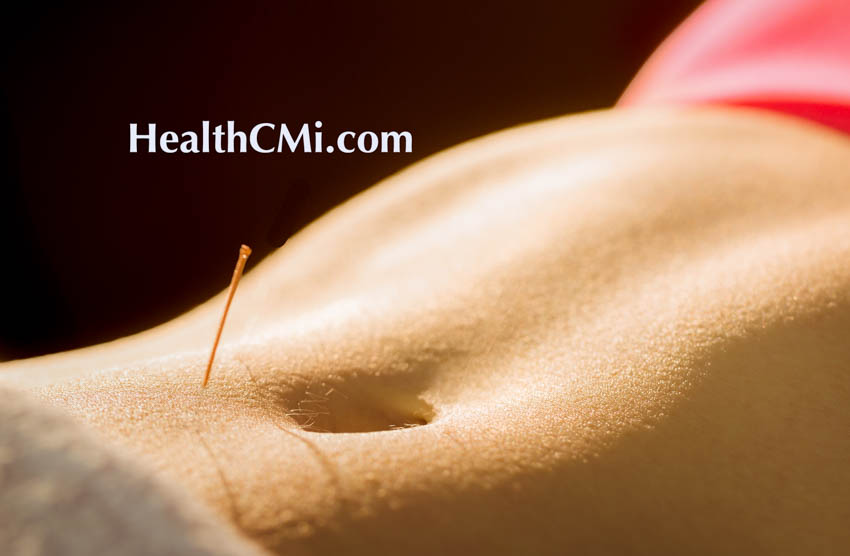Acupuncture improves patient outcomes for the treatment of intrauterine adhesions (IUAs). Researchers from the Shanghai University of Traditional Medicine collaborated with Longhua Hospital and Tongji University’s Maternal and Child Care Service Centre investigators in a clinical trial. They compared IUA treatments and discovered that the addition of acupuncture and moxibustion significantly improves patient outcomes for patients receiving standard care.
This two-arm investigation compared standard care and standard care plus acupuncture and moxibustion. Standard care consisted of transcervical resection of adhesions (TCRA) and sequential hormone replacement therapy (HRT).
TCRA is a medial procedure wherein a surgeon removes adhesions. HRT involved supplementation with estrogen and progestin. The results show that the addition of acupuncture and moxibustion improves patient outcomes and also improves endometrial thickness parameters and blood flow. [1] Acupuncture and moxibustion improved the total efficacy rate by 16%.
Intrauterine adhesions (i.e. IUAs, Asherman’s syndrome) is the bonding of scar tissue lining of the uterus. This results in decreased uterine cavity volume. Causes include infections of the endometrium (i.e. membrane lining the uterus) or adverse effects following a surgical procedure. It may be asymptomatic or include dysmenorrhea, infertility, recurrent miscarriages, complications during delivery, and chronic pelvic pain.
Transcervical resection of adhesions (TCRA) is a standard treatment for IUA in hospital settings, but the recurrence rate is high. Even after the TCRA treatment, some patients continue to experience absent or infrequent periods and complications during pregnancy.
The observational parameters in this trial included three categories:
- IUA levels are determined with hysteroscopy, symptoms are measured using a four-level scoring system, the higher score signifies more severe symptoms.
- Blood flow is measured using both the resistance Index (RI) and the perfusion index (PI).
- Laboratory data: white blood cell count (WBC), prothrombin time (PT), activated partial thromboplastin time (APTT), thrombin time (TT), tumor necrosis factor-α, (TNF-α), interleukin-6 (IL-6), fibrinogen (FIB), transforming growth factor-β (TGF-β), vascular endothelial growth factor (VEGF).
The total efficacy measurement was assessed based on three categories:
- Significantly effective: normal menstruation, normal appearance of the uterine cavity, smooth endometrial surface, bilateral uterine horns of the fallopian tubes clearly visible
- Effective results: increase in menstrual volume when compared with menstrual volume prior to surgery (but remain lower than normal blood flow), near-normal appearance of the uterine cavity, slight adhesions visible
- Ineffective: no significant observable improvement
Based on the above criteria, the overall efficacy rate in the standard therapy control group was a 76%, versus 92% in the acupuncture and moxibustion integrative treatment group. All observational parameters presented improvements in the two groups, with more significant changes shown in the integrative treatment group when acupuncture and moxibustion were administered.
The study used a sample of 100 IUA cases admitted to the center. The 100 cases were randomized into a standard therapy control group receiving TCRA plus HRT, and an acupuncture and moxibustion integrative treatment group, receiving acupuncture and moxibustion in addition to TCRA and HRT. Statistical baselines were the same before treatment.
Patients in both groups underwent TCRA procedures followed by HRT for 30 days, completing one treatment session. The entire course of treatment consisted of three sessions.
In addition to receiving the standard HRT, the acupuncture moxibustion integrative treatment group received the following protocol. Practitioners administered acupuncture and moxibustion on alternate days after the fifth day following the first menstruation after the surgery, with ten days completing a treatment session. The entire course of treatment consisted of three sessions.
Patients were advised to urinate before the treatment commenced. A supine position was taken. Sterilized needles (0.25 × 40 mm) were inserted perpendicularly. Insertion length was 10–20 mm. A mild reinforcing-attenuating manipulation method was applied. The following acupoints applied were:
- CV4 (Guanyuan)
- CV6 (Qihai)
- SP10 (Xuehai)
- ST29 (Guilai)
- Extra Point (Zigong)
- ST36 (Zusanli)
- SP6 (Sanyinjiao)
- LV3 (Taichong)
- SP8 (Diji)
Moxa cylinders (2 cm) were connected to the needle ends on Zusanli and Zigong. Acupuncture needles remained in position for 30 minutes prior to removal.
The study demonstrates that when acupuncture and moxibustion are used in conjunction with the standard TCRA and hormonal treatment protocols, patients exhibit observably greater results than patients who solely utilize the standard protocols to alleviate intrauterine adhesions.
Reference:
Efficacy Observation of Needle-warming Moxibustion Combined with Estrogen and Progestin Sequential Therapy for Intrauterine Adhesion, Ma Juanjuan, Zhang Yijun, PEIJIAN, Wu Sheng Nan, Weng Xiaochen, Shanghai Journal of Acupuncture, November 2022, Volume 44 Issue 11, 1005-0957 (2022) 11-1077-07.



